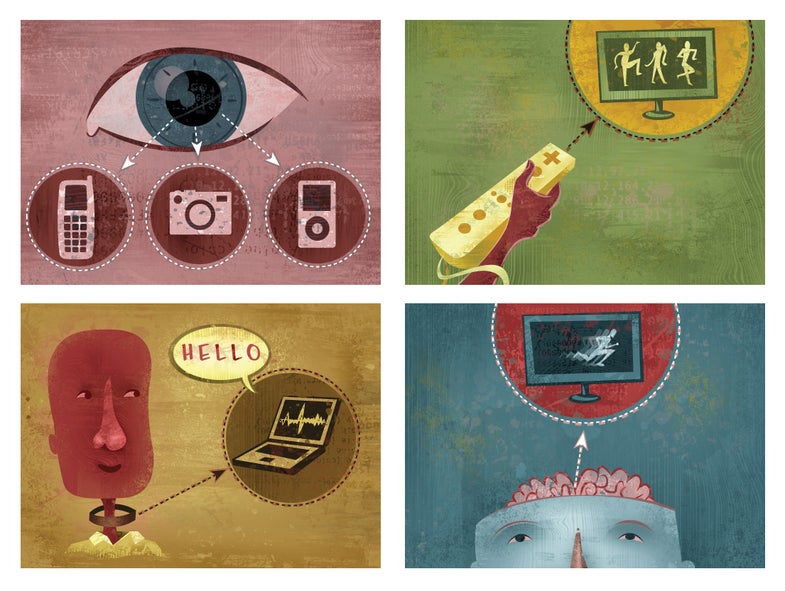The Hands-Free Future
Say goodbye to grimy keyboards. Here are four innovations that merge man and machine

Using motion sensors, brain signals and a heap of creativity, several new technologies promise to do away with cramped typing fingers, videogame-fried eyes and hoarse phone voices. This past summer in Tokyo, for instance, a paralyzed man with electrodes attached to his head took his Second Life avatar on a virtual walk just by envisioning his character strolling. Engineers at a biotech start-up in Illinois are now testing a neck device that allows mute people to speak by intercepting nerve signals en route to the vocal cords, and a team of grad students at the Massachusetts Institute of Technology has devised a Wii-mote-controlled PC game for the blind.
Scientists already have the know-how to make mind control a reality. The rest is engineering, says Rodney Brooks, a roboticist at MIT. “It’s only a matter of time before it will be normal for people to interface with the virtual world using direct connections to their brain,” he predicts. “We’ll be able to activate any of our machines just by thinking about it.” It’s a nifty idea for all of mankind, but even more so for those who struggle to talk, walk, and see. Click here to see the top notable mind-control devices making headlines.

Eyeball Remote: What Is It

Eyeball Remote: Who Makes It

Eyeball Remote: How It Works

Eyeball Remote: Cool Features

Computer Speech: What Is It

Computer Speech: Who Makes It

Computer Speech: How It Works

Computer Speech: Cool Features

Mind Control: What Is It

Mind Control: Who Makes It

Mind Control: How It Works

Mind Control: Cool Features

Sightless Gaming: What Is It

Sightless Gaming: Who Makes It

Sightless Gaming: How It Works

Sightless Gaming: Cool Features